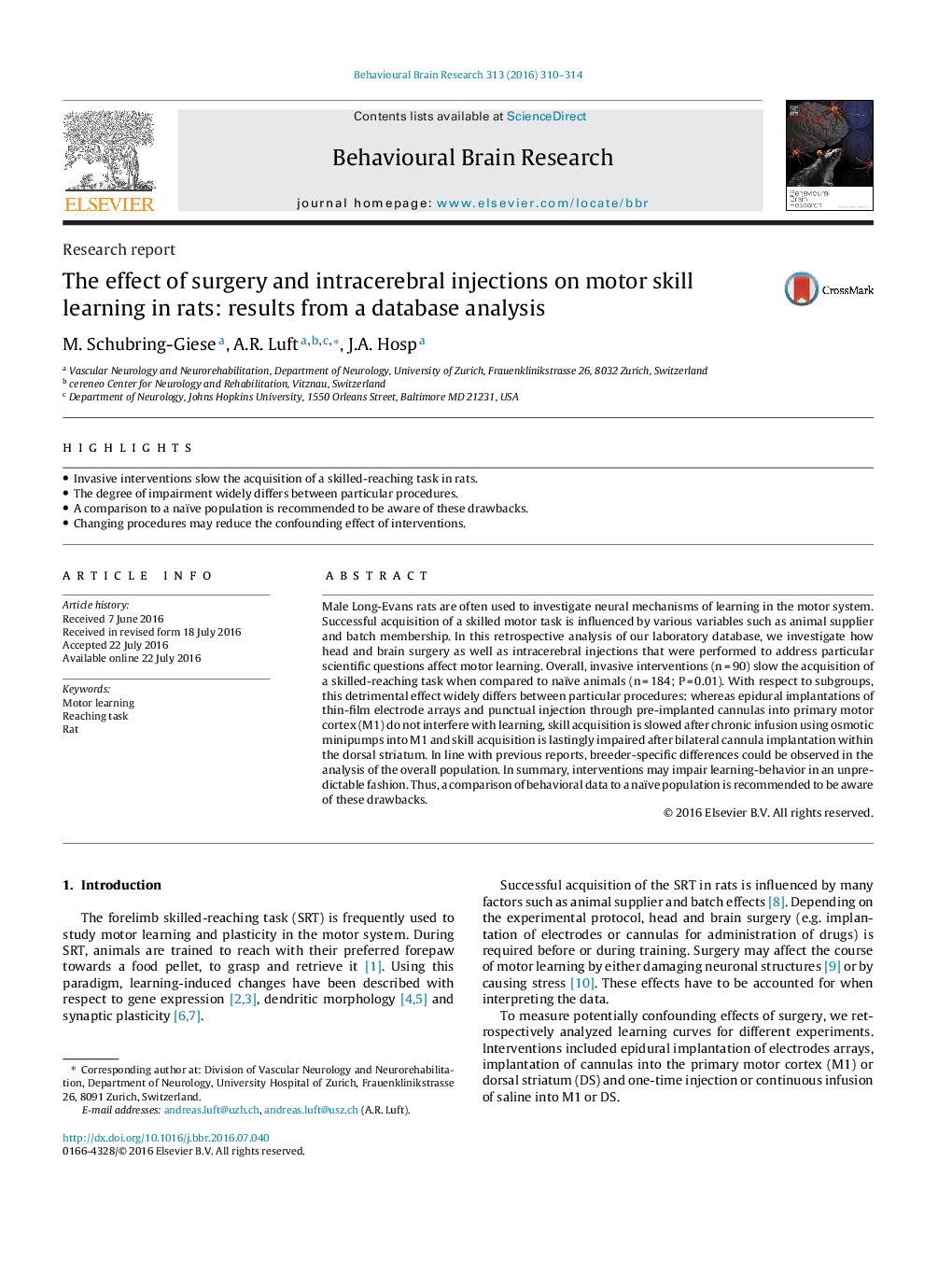| Article ID | Journal | Published Year | Pages | File Type |
|---|---|---|---|---|
| 6255858 | Behavioural Brain Research | 2016 | 5 Pages |
â¢Invasive interventions slow the acquisition of a skilled-reaching task in rats.â¢The degree of impairment widely differs between particular procedures.â¢A comparison to a naïve population is recommended to be aware of these drawbacks.â¢Changing procedures may reduce the confounding effect of interventions.
Male Long-Evans rats are often used to investigate neural mechanisms of learning in the motor system. Successful acquisition of a skilled motor task is influenced by various variables such as animal supplier and batch membership. In this retrospective analysis of our laboratory database, we investigate how head and brain surgery as well as intracerebral injections that were performed to address particular scientific questions affect motor learning. Overall, invasive interventions (n = 90) slow the acquisition of a skilled-reaching task when compared to naïve animals (n = 184; P = 0.01). With respect to subgroups, this detrimental effect widely differs between particular procedures: whereas epidural implantations of thin-film electrode arrays and punctual injection through pre-implanted cannulas into primary motor cortex (M1) do not interfere with learning, skill acquisition is slowed after chronic infusion using osmotic minipumps into M1 and skill acquisition is lastingly impaired after bilateral cannula implantation within the dorsal striatum. In line with previous reports, breeder-specific differences could be observed in the analysis of the overall population. In summary, interventions may impair learning-behavior in an unpredictable fashion. Thus, a comparison of behavioral data to a naïve population is recommended to be aware of these drawbacks.
